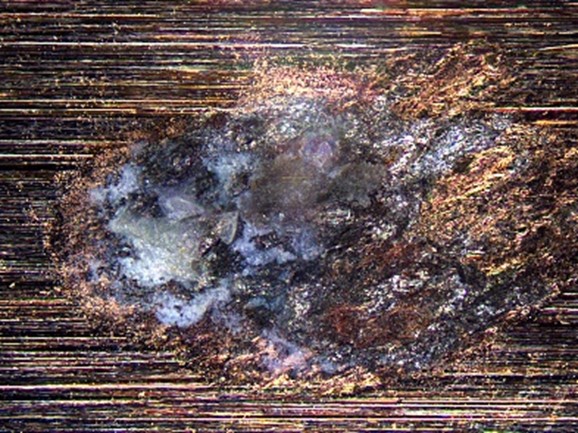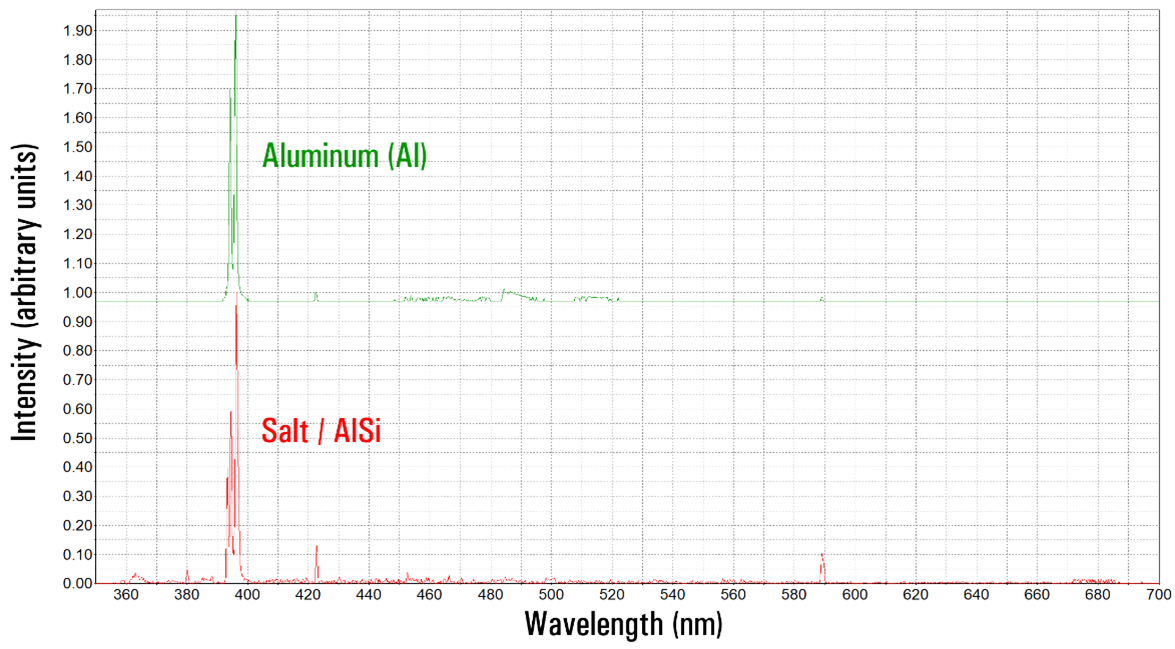Electronics have become imbedded into products in almost every area of life. Along with this expansion, numerous industries, from automotive to medical device, have a growing need for robust and efficient methods to assess quality [1]. The many components used in end products are all subject to safety regulations and regularly have to undergo quality control analyses. Researchers, engineers, and technicians need to be able to determine the visual quality and chemical composition of the components quickly, accurately, and cost-effectively.
In electronics, components like soldering materials often need to be analyzed to show that they comply with non-toxicity regulations (e.g., the absence of lead) and to address any quality claims that may emerge [2]. The method of analysis generally involves two discrete steps—visual inspection via an optical microscope to observe microstructure and chemical analysis via energy dispersive x-ray spectroscopy (EDS or EDX) on a scanning electron microscope (SEM) to determine the material’s composition [2]. The process involves considerable skill and preparation time, not to mention processing time and cost.
The growing, legitimate concern among industry professionals is that this technology is too slow, ultimately not cost-effective, and that manufacturers may be ignoring other more recent, faster, and potentially better solutions.
Bringing the key components together
One of these solutions, which has been shown to save significant amounts of time, money, and effort, is to combine the two key elements into a single system - in other words, a microscope that can simultaneously analyze chemical composition. Using this two-in-one system, researchers, engineers, and technicians can focus in on the material structure of interest through the microscope and simultaneously trigger the composition analysis with a single click.
The key to this second step is laser induced breakdown spectroscopy (LIBS) in which a high energetic laser pulse ablates a small piece of the sample and generates a plasma plume [3-5]. When the plasma cools down, it emits a light of characteristic wavelength. The spectrum is the chemical fingerprint of what you see in the microscope image and the chemical composition can be identified.
Compared to typical downstream analysis with electron microscopy, this solution can save upwards of 90% of the time that it takes to complete the two steps separately. Part of this time savings is because far less sample preparation is needed downstream, relative to other methods, an advantage that made LIBS the system of choice on the NASA Mars rover Curiosity [6]. Quality control analysis can take just a few minutes compared to a few hours for SEM-EDS.
A case study


Optical microscope images, displayed in 2D (top) and 3D (bottom), of salt contamination on an aluminum/silicon (Al/Si) surface. Credit: Gerweck GmbH, Germany.


A German company, that provides surface processing and plating of electronic components with various materials, including gold, silver, copper, and nickel, offers a great example of an organization that is seeing the benefits of switching to LIBS. It regularly receives requests for proof of quality claims from customers which precipitates root-cause analysis (comparison between raw material and returned parts). Common root-cause issues are contamination or surface defects (e.g., via salts or lubricant residues) of the raw material or process contamination. For failure analysis, after optical inspection, the company needs to identify the materials in a spot on the scale of µm. For automotive customers, an 8D report is expected within 10 days, including root-cause analysis and countermeasures.
The company had previously sent samples out to an external laboratory for advanced SEM-EDS, which leads to extra cost and processing time, with additional lab runs required on occasion. The company wanted to switch to a process that did not require advanced user training, sample preparation, nor external processing, and which saved time and money overall. The aim was to be able to carry out optical examinations, evaluation of surface topographies, and qualitative analyses with little effort.
The company began utilizing the two-in-one microscope and LIBS system and achieved significantly faster results — turnaround time became less than a day — which freed up time for additional investigations and allowed 8D deadlines to be easily met. The other benefit was reduced analysis cost. Savings were also seen in reduced quality-related issues and by the identification of possible root causes of defects upfront in production. The results are used as strong evidence, showing a decrease in the number of claims.
Manufacturing into the future
Materials inspection is important in areas beyond quality control — it’s needed in research and development (R&D), technical cleanliness, and failure analysis (FA) across multiple industries and fields, including transportation, automotive, aerospace, metal alloys, semiconductors, ceramics, electronics, medical devices, earth science, forensics, chemicals, and pharmaceuticals, with each area having its own subsets of uses. For instance, in technical cleanliness, particle analysis is essential for automotive parts and components, fuels and lubricants, electronic components, as well as chemical and pharmaceutical products [1,2,7-9]. These areas could all benefit from a more streamlined, efficient materials inspection system offering both visual and chemical analysis.
At a time when the manufacturing sector is under huge economic and production pressure from the COVID-19 crisis, efficiencies like these, and the associated cost savings, could go a long way in helping manufacturers not only survive, but also thrive. Researchers, engineers, and technicians shouldn’t be wary of embracing new technology simply because this is “what we’ve always done.” The pandemic has provided a powerful push to embrace new technology that is faster, simpler, and smarter.
References
1) M. Oravec, A. Divoková, P. Lipovský, M. Karásek, R. Janošík, Technical Cleanliness – a Requirement of Precision Manufacturing, Acta Mechanica Slovaca (2019) vol. 23, iss. 4, pp. 46 - 51, DOI: 10.21496/ams.2020.008
2) Technical Cleanliness in Electrical Engineering: Dirt is simply matter in the wrong place, 2nd edition, Guideline (2018) ZVEI. https://www.zvei.org/en/press-media/publications/guideline-technical-cleanliness-in-electrical-engineering
3) D.A. Creamers, L.J. Radziemski, Handbook of Laser-Induced Breakdown Spectroscopy (John Wiley & Sons, Ltd., New York, 2006). DOI:10.1002/9781118567371
4) T. Kim, C-T. Lin, Laser-Induced Breakdown Spectroscopy, Chapter 5 in Advanced Aspects of Spectroscopy, M.A. Farrukh, Editor, IntechOpen (2012) DOI: 10.5772/48281
5) R. Kohli, Methods for Monitoring and Measuring Cleanliness of Surfaces, Ch. 3, Developments in Surface Contamination and Cleaning, Volume 4: Detection, Characterization, and Analysis of Contaminants, Eds. R. Kohli & K.L. Mittal (Elsevier, 2012) pp. 154-155, DOI: 10.1016/C2009-0-64375-0
6) All About the Laser (and Microphone) Atop Mars 2020, NASA's Next Rover, News, Jet Propulsion Laboratory/California Institute of Technology/NASA, February 7, 2020. https://www.jpl.nasa.gov/news/news.php?feature=7591
7) VDA (German Association of the Automotive Industry), QMC (Quality Management Center), Volume 19, Part 1, Inspection of Technical Cleanliness, Particulate Contamination of Functionally Relevant Automotive Components, 2nd Revised Edition, March 2015. https://webshop.vda.de/qmc/de/volume-191
8) VDA (German Association of the Automotive Industry), QMC (Quality Management Center), Volume 19, Part 2, Technical cleanliness in assembly, Environment, Logistics, Personnel and Assembly Equipment, 1st edition 2010. https://webshop.vda.de/qmc/de/volume-192
9) ISO/DIS 16232 Road Vehicles, Cleanliness of components and systems, International Organization for Standardization. https://www.iso.org/standard/70267.html
"control" - Google News
October 07, 2020 at 05:36PM
https://ift.tt/3d91H9A
Simplifying Quality Control in Production and Manufacturing - Combining Microscopy and Chemical Analysis - Technology Networks
"control" - Google News
https://ift.tt/3bY2j0m
https://ift.tt/2KQD83I
Bagikan Berita Ini

















0 Response to "Simplifying Quality Control in Production and Manufacturing - Combining Microscopy and Chemical Analysis - Technology Networks"
Post a Comment